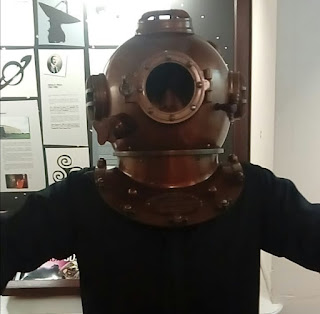Doing some bibliography writing
For this reading week we finally had to start putting our weeks of research to us. Even though this will only be our first draft of our topic, it felt worrisome writing it. I felt nerves as I wasn't sure how to begin writing about Narrative Tools, or if what I was writing was good. Eventually I composed myself and was able to write my topic in a much easier to handle way than writing it all out in one go. I split it into sub-topics to help me more easily discuss my points.
Music:
Music is a narrative tool that can carry an immense amount of emotion. It can help elevate a scene, giving it more emotional depth. An infamous example of the power of music as a narrative tool would be from Metal Gear Solid 3: Snake Eater. While the entire game in general has an amazing score, one scene in particular stands out when compared to the rest of the game, the ladder sequence. After defeating The End, Snake must continue on his mission towards the mountains. He enters through a cave that leads towards the mountains. As he reaches the end of the cave, he reaches a ladder, and begins to climb. The player naturally expects the ladder to be a short climb, but after a few seconds of climbing, all you can hear is the sound of Snake as he climbs up. A sound can be heard echoing through the shaft as you climb, it’s the games' main theme, “Snake Eater”.
The player is left to themselves, the theme, and their thoughts. It gives them time to ponder all the events they’ve been through, and what has yet to come. All though a simple scene, the music conveys so much emotion, and results in one of the most memorable scenes in the game series.
Writing:
The backbone behind every narrative is its writing. A well written story is the most important narrative tool. It’s what draws a player in, and feeds their curiosity to discover what happens next. A good story can help players overlook lacklustre gameplay. None exemplify this better than Telltale, particularly with their series, The Wolf Among Us. While the gameplay is minimal, the story is what keeps the players drawn in.
Throughout the first season, a dark mystery is discovered, which gradually grows more and more gripping, in part to its amazing dialogue. Getting to truly understand the effect it’s having on characters, and even showing the toll it takes on Bigby. We get to see characters change in interesting ways, seeing previously aggressive characters break down over events in game, or share their fear as they slowly grow more trustworthy from your actions. The development shown gives players a connection with the characters, as you develop along with them, and how you treat them results in how they treat you. Giving you the impression, you’re talking to someone with a real personality, life before you knew them.
Cinematics:
Games have increasingly begun to utilise cinematics and cutscenes as a way to show you exactly what they want to show you. Cinematics and specific camera angles have led to games being able to evoke a response or feeling from its players. A powerful use of cinematics in games is displayed in The Last of Us. During the beginning stages of the zombie apocalypse, our character Joel, is trying to escape to safety alongside his daughter and brother. After narrowly escaping a group of zombies, Joel carries his daughter, Sarah, to a nearby soldier, in hopes of getting some help. The soldier, in a state of panic aims his gun and opens fire. While Joel is fine, his daughter is gasping, and crying in pain, as she bleeds out in his arms.
This scene is gut-wrenching, not only from the events but how it is shot. Before we even get to see what happened, we hear Sarah, gasping for air. Without even getting to see her, we, like Joel, are immediately able to realise what has happened. Then when the camera focuses on her, bleeding out in Joel’s arms, without even knowing her long, we are met with this powerful shot that elicits emotion like no other. The scene wouldn’t draw nearly as much emotion as it would if we saw it entirely from the beginning, the close-up shots on Joel and Sarah’s faces allow us to experience the emotion through them. It adds an element of reality to the situation, as if we were in such a situation, we wouldn’t have seen it unfold and seen the tragedy immediately. We’d see past it at first just like Joel, only to acknowledge it after hearing the gasps.



Comments
Post a Comment